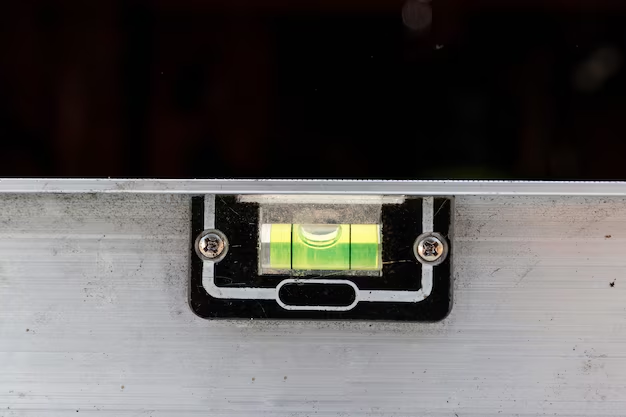Understanding Amperage: How Much Power Does Your Refrigerator Really Use on Startup?
When it comes to household appliances, the refrigerator is one of those indispensable items that quietly hums away, keeping your food fresh and your drinks cold. However, understanding the energy consumption of your refrigerator, especially during its startup phase, can be crucial for managing your home's overall energy efficiency. So, just how many amps does a refrigerator draw on startup, and why does it matter? Dive into the world of electrical consumption to uncover this mystery and learn how to make your home more energy efficient.
🔌 The Electrical Demand of Refrigerators
What Happens When a Refrigerator Starts?
When a refrigerator starts up, it initially requires a surge of electrical power to get the compressor motor running. This startup current, which can be significantly higher than the running current, is necessary to overcome inertia and to start the cooling process. This spike in power demand is called inrush current and can be two to three times higher than the amperage used during regular operation.
How Many Amps Can You Expect?
While the exact amperage drawn by a refrigerator on startup can vary based on its size, age, and efficiency, many household refrigerators typically draw between 3 to 5 amps when running. However, during startup, this number can increase significantly. It's not uncommon for a refrigerator to draw between 15 to 20 amps just for a few seconds during this initial phase. This is crucial to consider, especially if you're evaluating the capacity of your home's electrical circuits.
Factors Affecting Startup Amperage
- Size of the Refrigerator: Larger models often have more powerful compressors, which can lead to higher startup wattage.
- Age and Condition: Older refrigerators might draw more power due to less efficient components.
- Temperature Settings: Low-temperature settings can increase the load during startup.
- Voltage of the House: Homes with lower voltage might see a higher amperage draw as the appliance compensates for the difference.
🌟 Maximizing Energy Efficiency
Knowing the demands of your refrigerator can help you optimize energy use.
Energy-Saving Tips for Refrigerators
- Temperature Settings: Set the refrigerator at around 37°F (3°C) and the freezer at 0°F (-18°C) for optimal performance without overworking the compressor.
- Regular Maintenance: Clean coils, check door seals, and ensure proper airflow to maintain efficiency.
- Proper Positioning: Keep the refrigerator away from heat sources such as ovens and direct sunlight.
Modern Refrigerators: Are They More Efficient?
Today's refrigerators are designed to be more energy-efficient, thanks to advancements in technology. Many now come with Energy Star ratings, which guarantee a certain level of efficiency. The compressors used in modern appliances are built to minimize inrush currents, thus lowering startup amperage.
🔄 Related Subtopics: Diving Deeper into Electrical Demands
Role of Inverter Technology
Inverter technology in refrigerators can significantly reduce energy consumption. Unlike traditional compressors, which start and stop, inverter compressors adjust their speed to the cooling demand, reducing the spike in startup amperage.
Smart Refrigerators and Energy Use
With the advent of technology, smart refrigerators now offer features that track energy consumption, notify you of maintenance issues, and even help with grocery lists. While initially more expensive, these models can offer savings in the long run by optimizing energy use.
The Importance of Circuit Planning
Understanding the amperage draw of appliances is crucial when planning the electrical layout of your home. Circuit breakers need to handle these surges to prevent outages. Knowing the startup amperage helps in selecting the right circuit and avoiding overloading issues.
📊 Key Takeaways: Refrigerator Amperage and Energy Efficiency
Here’s a quick list to summarize and embellish our exploration:
- 🔋 Startup Surge: Expect your refrigerator to draw 2-3 times its running amperage during startup.
- 🛠️ Maintenance: Regular checks can minimize inefficiency and lower overall energy bills.
- 🌿 Energy Star: Opt for energy-rated models for long-term savings and reduced environmental impact.
- 💡 Smart Think: Consider a smart refrigerator for integrating energy management systems.
- 🔧 Circuit Planning: Ensure your home’s circuit can handle startup surges to prevent electrical issues.
Final Insights
Understanding your refrigerator's energy demands isn't just about knowing numbers on a spec sheet—it's about making informed decisions for your household's energy efficiency. By being aware of the amperage your refrigerator draws, particularly during startup, you take one step closer to a more energy-conscious home. Whether you're upgrading to a new model or optimizing the one you already have, each informed choice contributes to a greener planet and a leaner electricity bill.
In closing, the quest for energy efficiency is ongoing. Every piece of knowledge about how appliances work helps consumers make smarter decisions that benefit both the pocket and the environment. As technology evolves, staying informed will remain key to optimizing your home's energy use. So, the next time you ponder your refrigerator's energy draw, remember—every amp counts!
